Final Parking Space: 1974 Ford Capri
During the late 1960s through early 1970s, the Detroit car manufacturers made a serious effort to bring over the products made by their operations in Western Europe; though some Vauxhalls and British Fords had been imported in earlier years, they had remained well outside the American automotive mainstream. GM offered various Opel models, Chrysler took a shot at moving Americanized Simca 1100s and Hillman Avengers, and Ford opted to sell its new sporty fastback here. This was the Capri, and I’ve found a snow-dusted first-generation example in a Denver-area car graveyard.
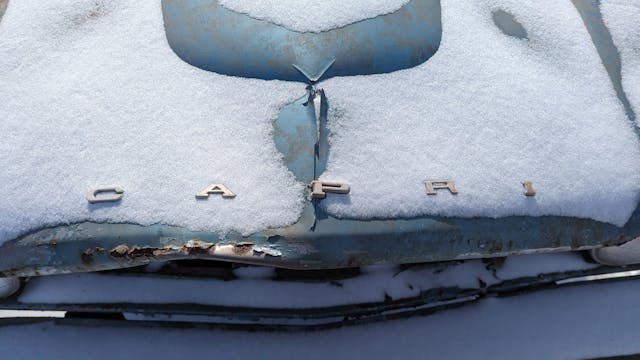
The Capri name has a lengthy history in the Ford Empire, beginning with the Lincoln Cosmopolitan Capri of the early 1950s, but this type of Capri is by far the best known. In the United States, this car was sold through Mercury dealers with no marque badging.
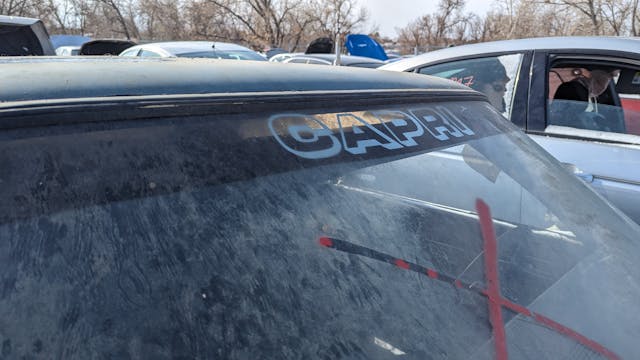
I came of driving age in Northern California in the early 1980s, and at that time everybody I knew referred to these cars—which were still common sights on the roads of the Golden State—as Mercury Capris despite the lack of Mercury badging.
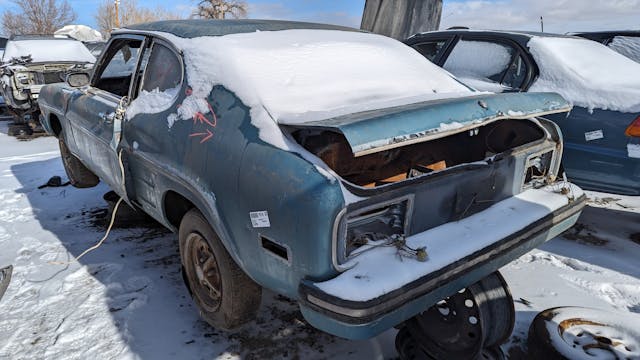
Dearborn began selling Fox-body Mustang twins with Mercury Capri badging for the 1979 model year, with production continuing through 1986. The Mercury Capri name returned for the 1991 through 1994 model years, on an Australian-built two-seat convertible based on the platform of the Mazda 323. Those Capris are by far the easiest to find in American boneyards today.
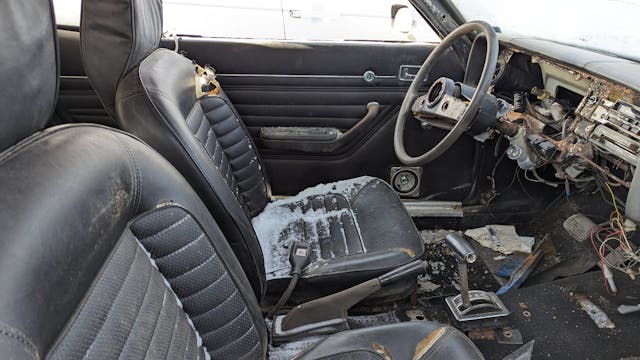
This type of Capri was sold in the United States for the 1970 through 1977 model years, and most North American owners of these cars prefer to use the European “Ford Capri” designation to avoid confusion with the later, Mercury-badged Capris.
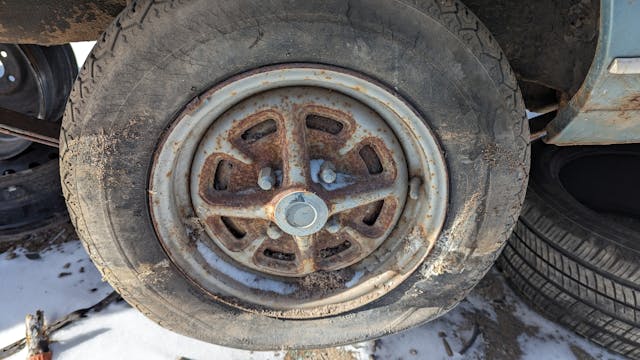
By the early 1970s, the Mustang had become bigger, heavier, and more luxurious than its mid-1960s predecessors, so it made sense that Ford should offer a lightweight sporty car for Americans who preferred nimble handling and decent fuel economy.

All U.S.-market Ford Capris were built in Cologne, West Germany. For other markets, they were assembled in the United Kingdom, Singapore, Australia, and South Africa.
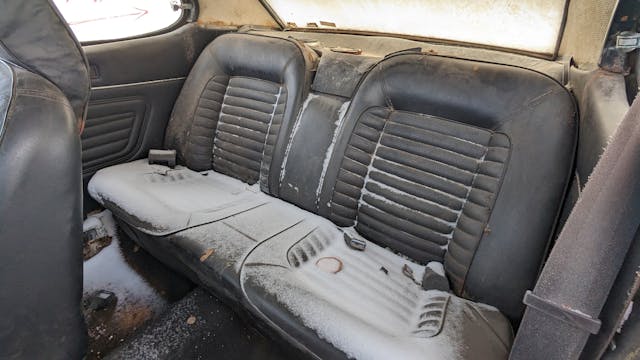
Capri sales improved each year at first, reaching the 90,000 mark for 1972 and topping 100,000 units sold for 1973. Then Ford introduced a new, smaller Mustang based on a modified Pinto platform for 1974; it was a few hundred pounds heavier than the Capri but also quite a bit cheaper. Capri sales in the United States began a steady decline at that point.
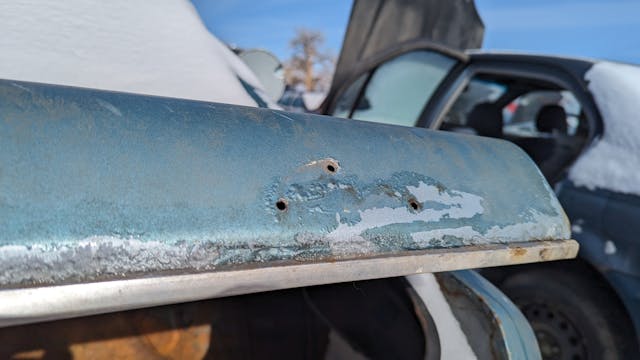
The 1974 Capri had an MSRP of $3566 with four-cylinder engine and four-speed manual transmission, or about $23,601 in 2024 dollars. Meanwhile, the 1974 Mustang II started at just $3081 ($20,391 after inflation).
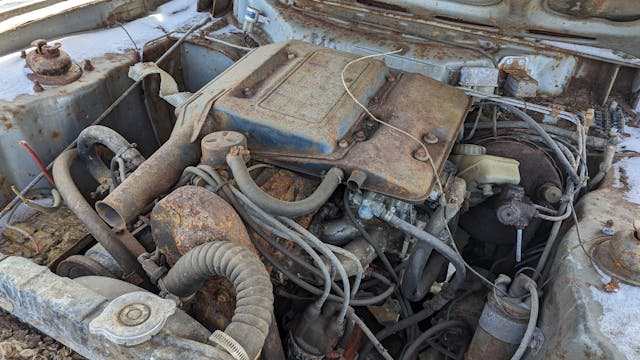
There were plenty of similarities to be seen in the engine compartments of the Mustang II and its same-year Capri intra-corporate competitors. This car came with a 2.0-liter SOHC straight-four rated at 80 horsepower, while the base engine in the 1974 Mustang II was a 2.3-liter version of the same engine with 85 horses.
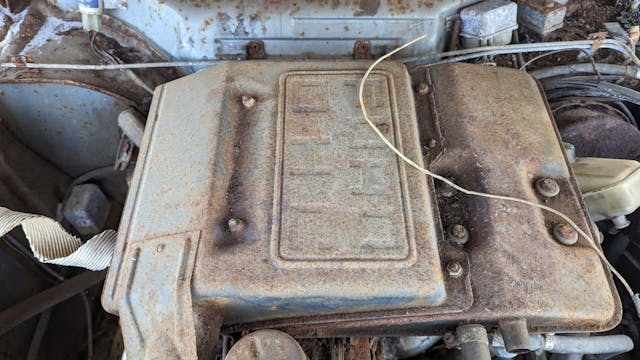
Both the Capri and the Mustang II for ’74 could be purchased with the 2.8-liter “Cologne” V-6 as optional equipment. That engine made 105 horsepower in both applications. For 1975, optional V-8 power returned to the Mustang, while the base Capri got the 2.3-liter four-banger.
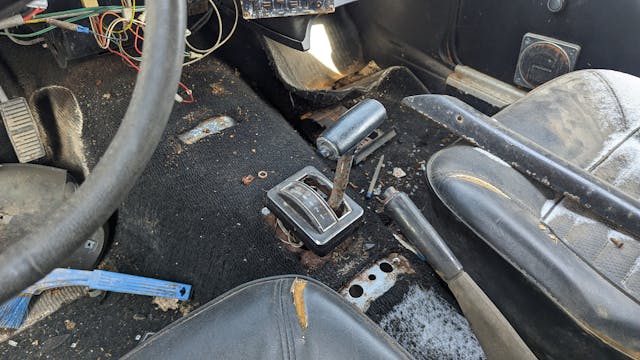
This car has the optional three-speed automatic transmission, which added $256 to its cost ($1694 in today’s money). I think this is the first 1970–77 Capri I’ve ever seen with an automatic.

It’s not especially rusty, but decades of outdoor storage have taken their toll. The interior is full of rodent nesting material and droppings, a real hantavirus threat in High Plains Colorado.
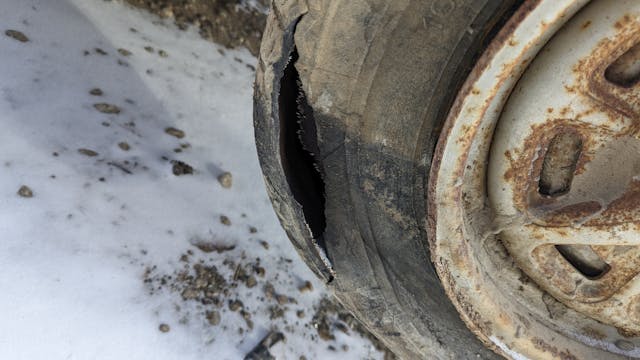
I think this car hasn’t run under its own power for at least 40 years.
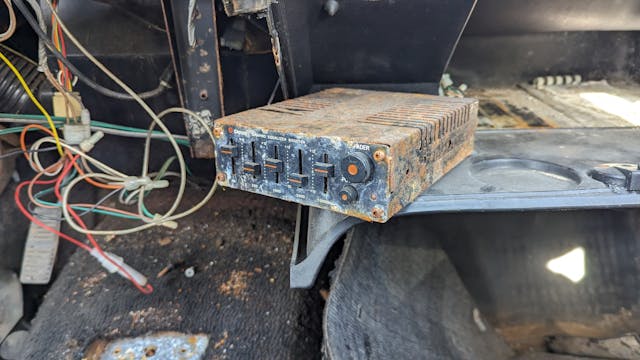
This Clarion equalizer/booster appears to be of early-1980s vintage.
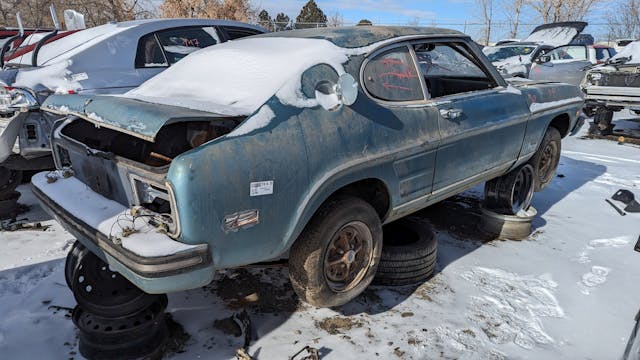
The lack of horrific rust would make this car well worth restoring on the other side of the Atlantic, but it makes more sense as a parts car here.
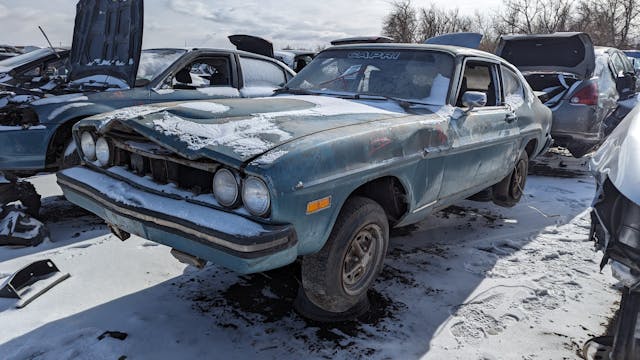
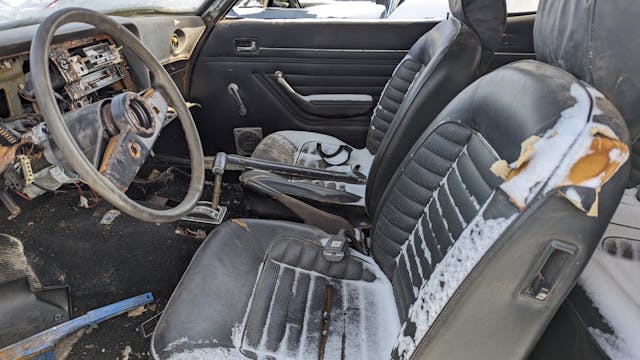






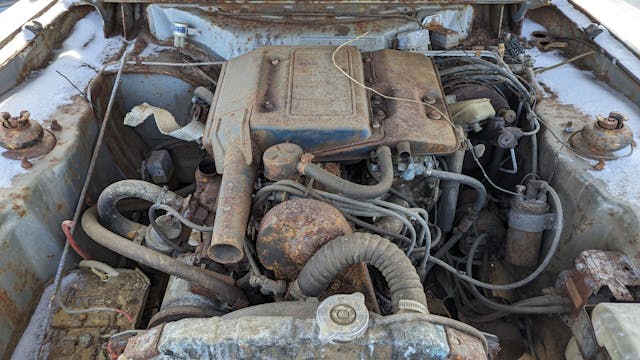

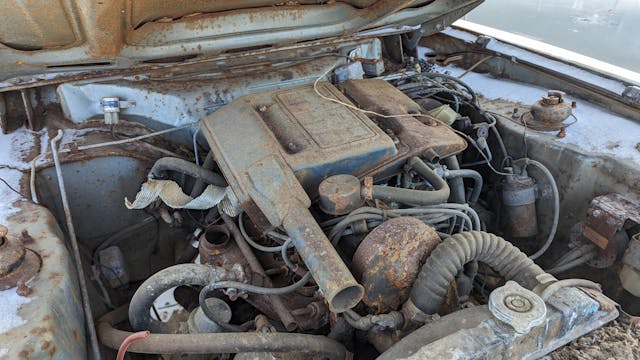

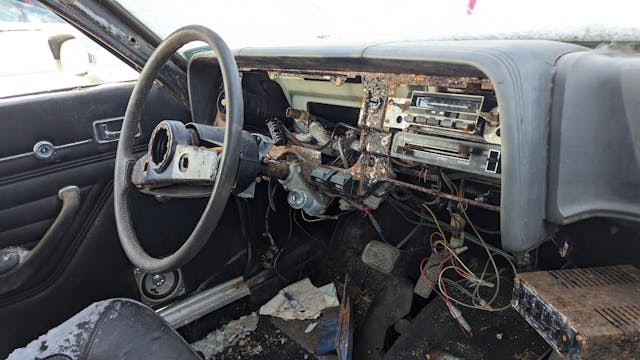






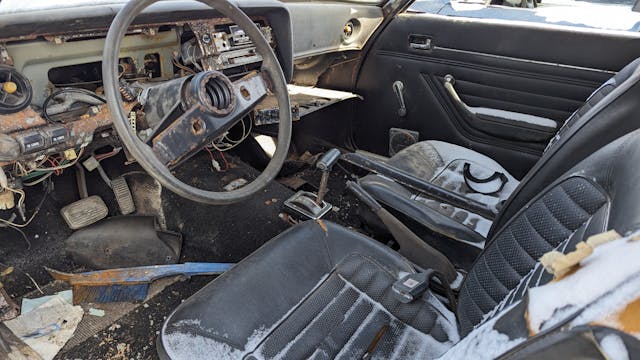

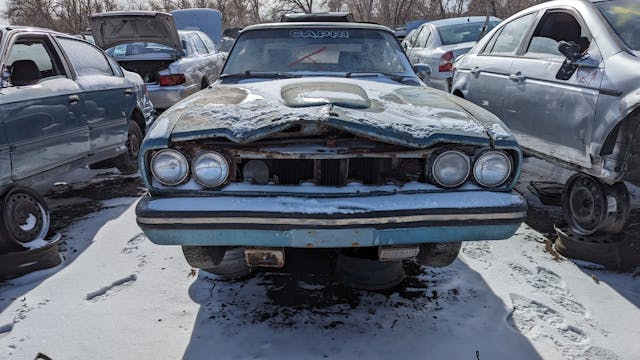
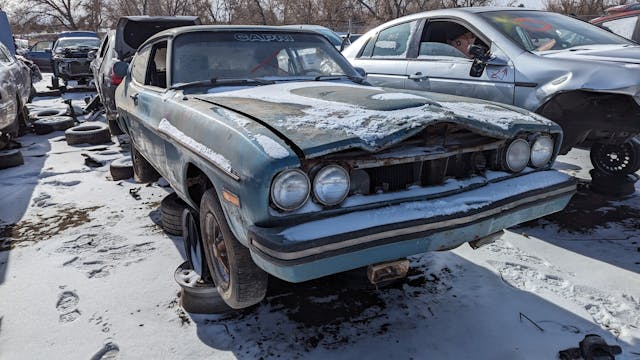
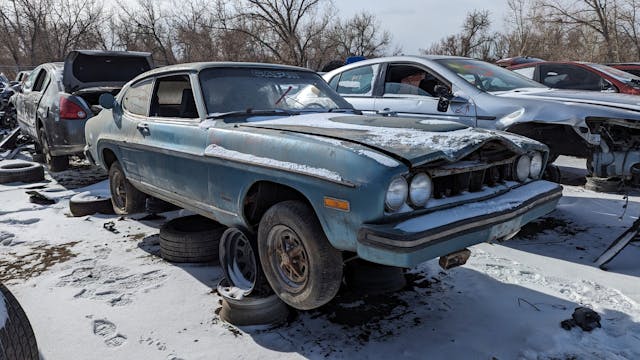


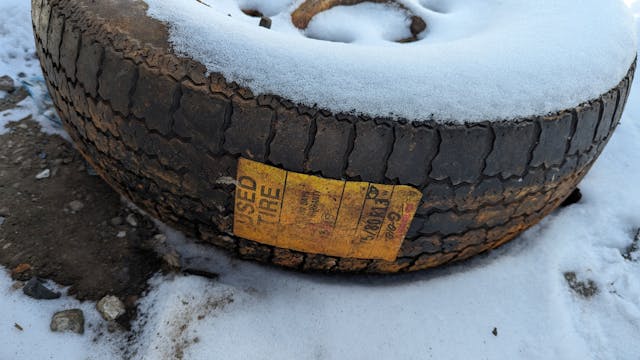

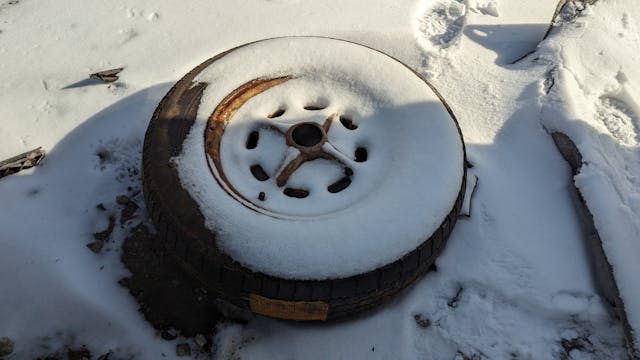
***
Check out the Hagerty Media homepage so you don’t miss a single story, or better yet, bookmark it. To get our best stories delivered right to your inbox, subscribe to our newsletters.



My sister had a 1974 Capri. She opted for the 6cyl and the 4 speed, in the same color blue. She traded in her 1967 6 cyl Mustang convertible to buy the Capri brand new. I had a 74 Capri also, handed down after my grandfather passed away. That one was the worst of all. 4cyl automatic. Very slow. Worst part my grandfather lived in the Bronx, and had mashed up both front fenders so the car was quite ugly. But it was mine
Yeah I don’t think I’d want to try to resurrect that car. I’m sure it was fun when it ran.
I have a 2.6L engine and 4 speed gear box to assist with restoration of this car.
My mother drove a 1972 2600 4 speed Capri, it was rather rare. It made it into the country with these funny letters on it RS. Lime green flat black tail panel and hood! Sadly it is not longer.
Ford of Canada contacted my parents and demanded we returned the car and would exchange it for any other Capri she liked , but my parents new what they had and it stayed!
That Capri brings back great memories. My neighbor had a friend that served in Nam. He showed off this shiny red Capri that I fell in love with in 1973. I had the privilege of driving it in Virginia during my junior year in high school. Great memories.
Great car. I had the honor of driving a 1973 Capri, during my junior year in high school in VA. Sure loved that car that a Nam vet brought down from Ohio
Loved those cars. I owned 4 of them. All but one the V6. Had a 73 2.0 when I was in the military in the Panama canal zone. I autocross it several times against a MGB, 3 Alpha GTV’S and a few others. I won first in class every time.
First new car. Brown, four banger with stick. Low on power but did a lot of autocross with it. Inexpensive fun to drive car for its time.
Borrowed one from a buddy for a few months while trying to find a car to use in my second job back in the early 90s. Mustard-ish yellow with a 4 cylinder and a stick. Had an unreliable “start” position on ignition switch, so always an adventure when setting off for work. Dash mounted ignition switch and chrome bumpers leads me to think it was a ’71, but I’m not sure about year. Surprisingly comfortable and fun to drive for my 6 foot frame. Finally bought a 1980 Mazda GLC four-door later to use as my driver at that location. 4 cylinder auto. What a letdown, though the fuel economy was pretty good.
My Dad owned one of these in the early 80s when I was a little kid. He said it was great for the first 5 years but after that it just exploded with rust which killed the car
I bought a new 1976 Capri II S. White with gold pinstriping. The more popular color was black with gold striping. Mine was a V6 with 4 speed. The very first day my wife drove it to work the clutch cable snapped leaving her in a parking lot. The embarrassed dealer got there quick with a tow truck and had it fixed within a day. That was a nice car that I’ll never find again.
Back about 1974, when I was driving a 1969 Beetle, the V6/4-speed Capri was kind of my semi-attainable “dream car”. Never actually bought one, though. A friend later drove a new Capri II, but I never liked those as well. Neither did he; his parents bought it for him, in return for making him get rid of his 1969 Z-28 Camaro!
Had a red 73 Capri 4cyl. Scraped it a an intersection…A week later saw a 73 green V6 and still have 40 years later…just love it….
I had a 71 2litre 4 with 4 speed manual. Great car. Black interior with what I call mustard yellow-same as my 71 MGB. Lost it when a guy ran a stop sign during a rain storm. later I bought a 76 Capri ii. Put steel louvres on the back window, Hella driving lights, Stebro dual exhaust and a monster air dam. Great on high speed corners but took about 8mph off the top end. Nice metallic blue with black interior and sunroof worked very well. First dealer wouldn’t sell me one with a sun roof so I went to another and got a wonderful car. Served me well for 4 years and 100,000+ miles before I bought a Corvette. Wish I had never sold it. Went cross country one summer and used the hatch area as a sleeping area when I couldn’t find a camp ground or hotel. Just a versatile car and lots of fun.
I should note it was the 2.8 V6 and 4 speed. Averaged just over 32mpg in the time I had it.
Thanks for the memories, as my first car was a ’72 Capri, 2000cc, 4-speed, medium brown metallic with a tan interior. My generous dad (a Mercury fan) and I split the cost in half. I’ll always recall that day at the dealer’s, as the double knit-clad sales guy offered to put a “bonnet” (vinyl top) on it. I wisely passed on that and never liked that ’70s look since. And though it was a fun car, referred to back then as a “super coupe,” lasting through years of undergrad and grad school, I still often think about what might have been if my dad and I had the bucks to spring for that “other car” on the lot that day–when Mercury was selling the De Tomaso Pantera.
In high school, my first car was a 72 2000 automatic. Man, it was slow. Strangely though, it was fun to drive! 45 years later, I still have it, along with several of its brethren. Never had a 74 model, although my other 72 has a 74 front end………! Intriguing vehicles.